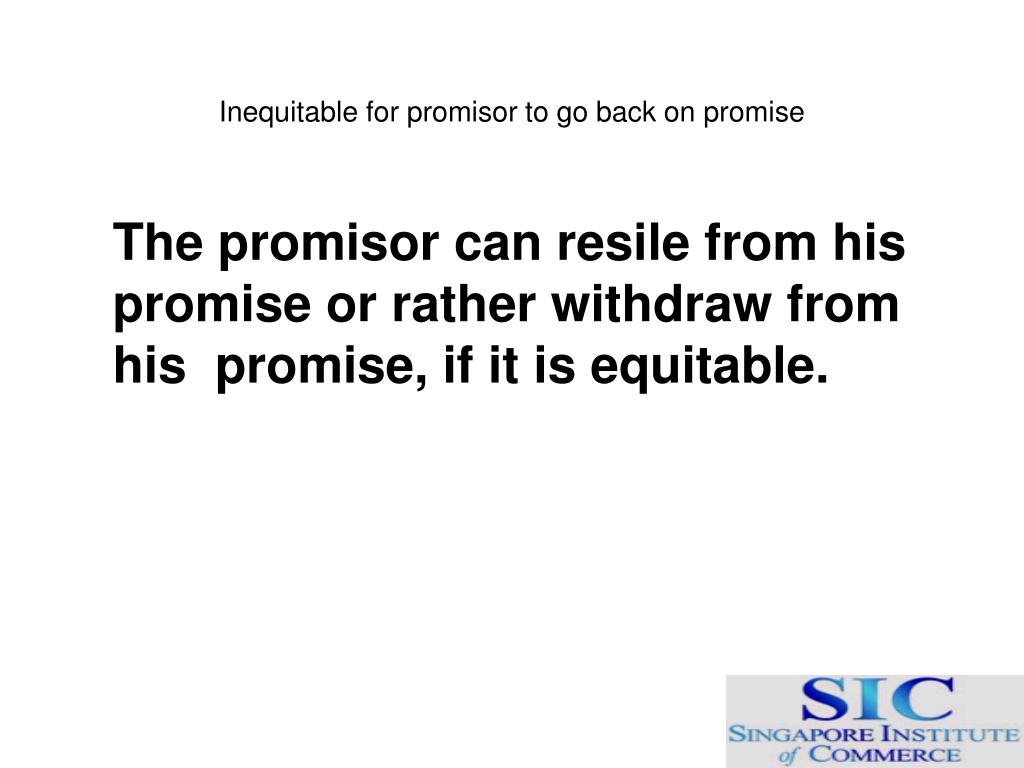Estoppel can only be used as a shield , not a sword. As such, the claim failed. The Court held that promissory estoppel could not be applied. It is NOT a cause of action itself. LJ Birkett supported this, describing promissory estoppel as a “ shield , not a sword ). The doctrine of equitable estoppel gives no new rights.

Promissory estoppel is a defence not itself a cause of action. Birkett LJ adopted a phrase of the husband’s counsel that the principle is ‘one to be used as a shield and not as a sword ’. Denning LJ said that the principle ‘does not create new causes of action. The learned Commissioner had before him the Petition of Archibald Duncan Combe which prayed that a Decree might be granted to him to dissolve his marriage.
The statement that promissory estoppel may be used as a shield but not a sword was introduced by the council in the case of Combe v Combeand was later approved by Birkett LJ. This case demonstrates how promissory estoppel is implemented as a shield in the English legal system. PROMISSORY ESTOPPEL – CONSIDERATION – LORD DENNING.
During the divorce process, a husband promised to pay his wife a tax-free sum of £1each year to represent a permanent maintenance payment. The wife was aware that the husband was not in a good financial state and made no claim to this payment. The argument was that this was an attempt to use estoppel as a sword , not a shield. Combe v Combe LORD JUSTICE SINGLETON: This is an appeal from an Order of His Honour Judge Gamon sitting as Commissioner in Divorce at Durham on the 10th January of this year.
What are some of the limitations upon promissory estoppel? In this video, we explain the third one: the maxim that promissory estoppel is a shield , not a sword. He stated the estoppel could only be used as a shield and not a sword. In the High Trees case, there was an underlying cause of action outside the promise. Here, promissory estoppel created the cause of action where there was none.
In this case, the court could not find any consideration for the promise to pay maintenance. Combe refers be regarded as a shield but not a sword ? Central london propertues v High Trees. It was available only as a defence and not as a cause of action. The case of Combe v Combe provides authority for this point, where it was stated that promissory estoppel can only operate as a ‘shield not a sword’. In Combe v Combe, a wife attempted to sue her former husband for a promise to pay her maintenance, although she had provided no consideration for the promise.
She tried to rely upon promissory estoppel, arguing that she had relied on the promise. World Heritage Encyclopedia, the aggregation of the largest online encyclopedias available, and the most. You cannot claim that someone should be estopped from revoking their promise. Shield not a sword. COMBE stands clearly for the proposition that estoppel may only be used as a defence - a shield but not a sword.

The normal scenario is that the promisor will sue and the promisee will raise the promise which is the basis of the estoppel, as a defence. As well as that, it must be remembered that the doctrine is ‘a shield not a sword ’. This was illustrated in Combe v Combe where Lord Denning had stated that the doctrine “does not create a new cause of action where none existed before. It only prevents a party from insisting upon his strict legal rights when it would be unjust to allow him. Combe v Combe established that there must be an existing legal relationship between the parties, which could be problematic where the relationship is social or domestic. Confirm the judgement in Combe v Combe - that promissery estoppel can only be used as a shield and NOT a sword.
One of the grounds was a question of promissory estoppel, a variation of a contract to pay more and whether the respondent was estopped from reneging on their promise. As I started my submission on this groun which was that Combe v Combe applies, p.
No comments:
Post a Comment
Note: only a member of this blog may post a comment.